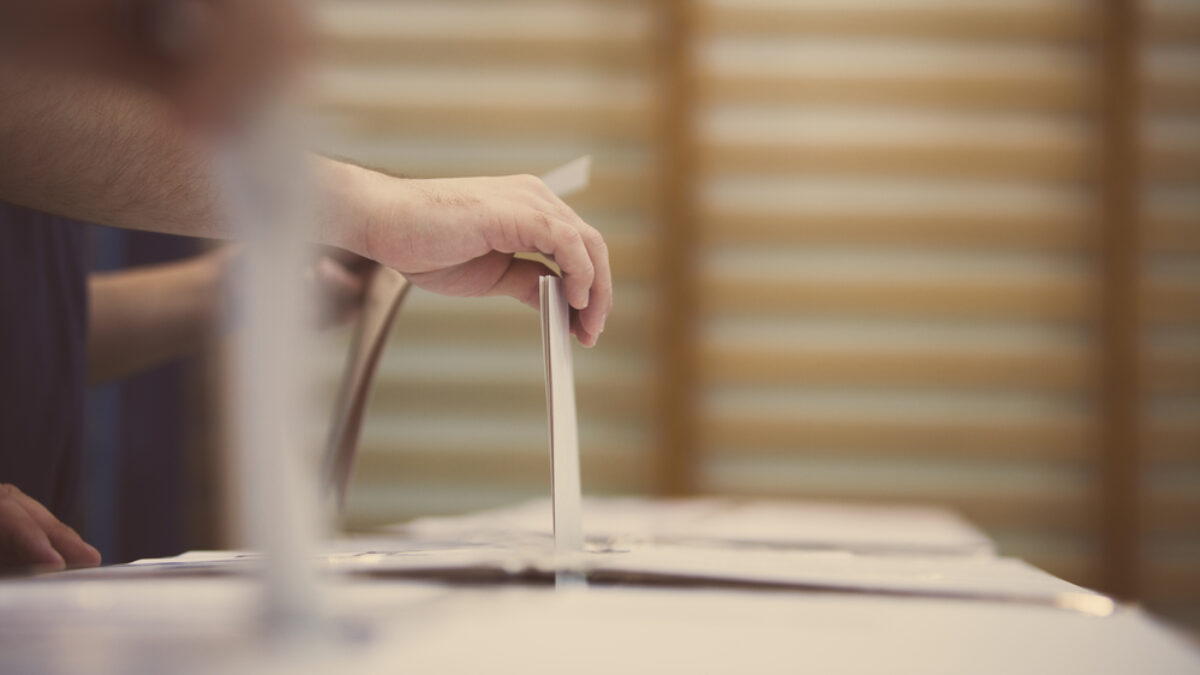
This week, a House race in Georgia’s Republican-dominated Sixth District came close to offering a surprise shift to Democratic power—and suggesting, at least to some, “an early referendum on President Trump.” Democrat Jon Osoff received 48.1 percent of the vote, just shy of the 50 percent he needed to win the House seat outright. He’ll now face a June runoff election with key Republican contender Karen Handel.
Democrats rallied early around Osoff, raising more than $8 million for his campaign, and voting for him in greater proportions than for any of the other five Democratic candidates. Meanwhile, 11 Republicans ran for the House seat, leading to less unity around a single candidate. Because of this, it seems likely Handel will win in the runoff.
However, there are several things to consider in the aftermath of Osoff’s near-win.
1. Democrats Won’t Make the Same Turnout Mistake Twice
One of the keys to Osoff’s surprise success was turnout among Democrat or Democrat-leaning voters. As the New York Times noted the day after the primaries, “Strategists tracking the race thought that a turnout of 160,000 voters would be a lot. In the end, more than 194,000 people voted, nearly matching the turnout in the 2014 midterms.”
Democratic voters are energized and determined. Many made the mistake of assuming Clinton would be elected in November 2016. They didn’t show up to vote. Now, incensed and shocked by Trump’s presidential victory, Democratic voters seem less likely to make the same mistake twice.
Again, considering the Republican leanings of Georgia’s Sixth District, it still seems doubtful that Osoff could win in June. But should Trump displease or discourage enough Republican voters, even a closely contested race could further galvanize the Democratic base, leading to greater successes in other districts or states. Should this momentum lead to congressional victory next year, our political climate could feel very different in 2018.
2. Republican Dissatisfaction Could Build
In a Politico poll released Thursday, Republican voters gave Trump mostly A’s and B’s for his time in office thus far. But nearly a quarter of voters still gave him F’s.
As Morning Consult’s Chief Research Officor Kyle Dropp noted, “This polling suggests that, at the very least, many of his voters see room for improvement. Forty-two percent of Trump voters grade his first 100 days a ‘B’ and another 23 percent give him a ‘C’ or worse.”
Some voters are happy with Trump’s moves thus far: many gave him highest points on his military decisions in these first 100 days. That said, there’s still some discontent over Trump’s failures in getting an Obamacare repeal passed (or unhappiness with the American Health Care Act itself). What’s more, many of the voters who embraced Trump because of his less interventionist stances on foreign policy are already feeling disgruntled over his recent foreign policy moves in Syria and North Korea. If these troubles continue to brew, it could influence the 2018 congressional races, as well as various state elections.
As the Times noted following Osoff’s near-win, the Georgia runoff may not be easy for Handel. “Handel is also quite likely to face a delicate political challenge: appealing to right-of-center voters, in a suburban Atlanta area where President Trump is not especially popular, without alienating his passionate fans,” reporter Alexander Burns writes. She will need strong support from both groups to defeat Mr. Ossoff.” So, too, Republican candidates in other states.
3. The Schismatic Climate May Lead To More Contentious Races
Our national contests are more hotly divided than ever. Fewer and fewer voters describe themselves as “moderates”: FiveThirtyEight reports that “purple” America is quickly vanishing from the map.
Some credit these changes to media shifts spurred by technology, the way it fosters outrage-oriented and reactionary “clickbait.” Others believe that our geographic shifts, into rural versus urban enclaves, have more to do with it. Regardless, it’s likely that congressional and state races may become even more nasty and heated. As David Wasserman notes for FiveThirtyEight,
[C]ommunities can change allegiances over time. But most places just aren’t budging — in fact, they’re doubling down. In an increasing number of communities like Baldwin County, Alabama, which gave Trump 80 percent of its major-party votes, and San Mateo, California, which gave Clinton 80 percent, an entire generation of youth will grow up without much exposure to alternative political points of view. If you think our political climate is toxic now, think for a moment about how nasty politics could be 20 or 30 years from now.
4. The Democratic Party Is Facing An Identity Crisis
Will the Democrats embrace Sen. Bernie Sanders’s economic populism and socialist proclivities? Or will they continue to adhere to the establishmentarianism and hawkishness of Hillary Clinton and her political generation? Will they be able to carve out a stance that wins back the blue-collar voters they lost to Trump?
While speaking on a “Come Together And Fight Back” tour with the DNC’s new chairman, Tom Perez, Sanders questioned Osoff’s progressivism on Tuesday. “Some Democrats are progressive, and some Democrats are not,” he noted.
But Sanders’ hesitancy on Osoff is symptomatic of divides within the Democratic Party. Sanders has already said he’s not a typical Democrat, instead calling himself an independent on MSNBC. He suffered the disdain of the DNC during the primary election largely because of his outsider politics. Yet now, he’s become the star of the Democratic Party after Trump’s victory, even as Hillary Clinton stepped into the background until just recently.
“If the Democratic Party is going to succeed — and I want to see it succeed — it’s gonna have to open its door to independents,” Sanders told MSNBC’s Chris Hayes. “There are probably more independents in this country than Democrats or Republicans. It’s got to open its doors to working people and to young people, create a grassroots party. That’s what we need.”
This new DNC tour suggests that Democrats see Sanders as their ideological savior, if they’re to take back the populist surge that helped Trump succeed. As John Davidson put it a couple days ago, the party has “all but named Bernie Sanders their quixotic leader.”
Whether that tactic actually works is another question.
5. #NeverTrump Conservatives Have To Find a Cause
Many Republican voters either voted for Trump unwillingly, or not at all. Perhaps they disliked him as a candidate; perhaps they disliked his populist stances. Some voted for him just because they disliked Hillary Clinton more.
Now, depending on the candidates running for office in their district, these voters may confront a similar choice in coming months. Will they bite the bullet, and vote with the GOP that gave them Trump? Or will they carve out some third path in today’s hostile political environment?
Third-party voting didn’t serve these folks well in the presidential election. As they see races in states like Georgia become close and contested, many may “bite the bullet” again, and vote along party lines.
If not, more Osoff stories may surface in the days ahead. Some conservatives may not mind such a shift, if it sends a signal to the GOP leaders in Washington. But it will create a significant challenge—and the possibility of deeper schisms—for Congress next year.








